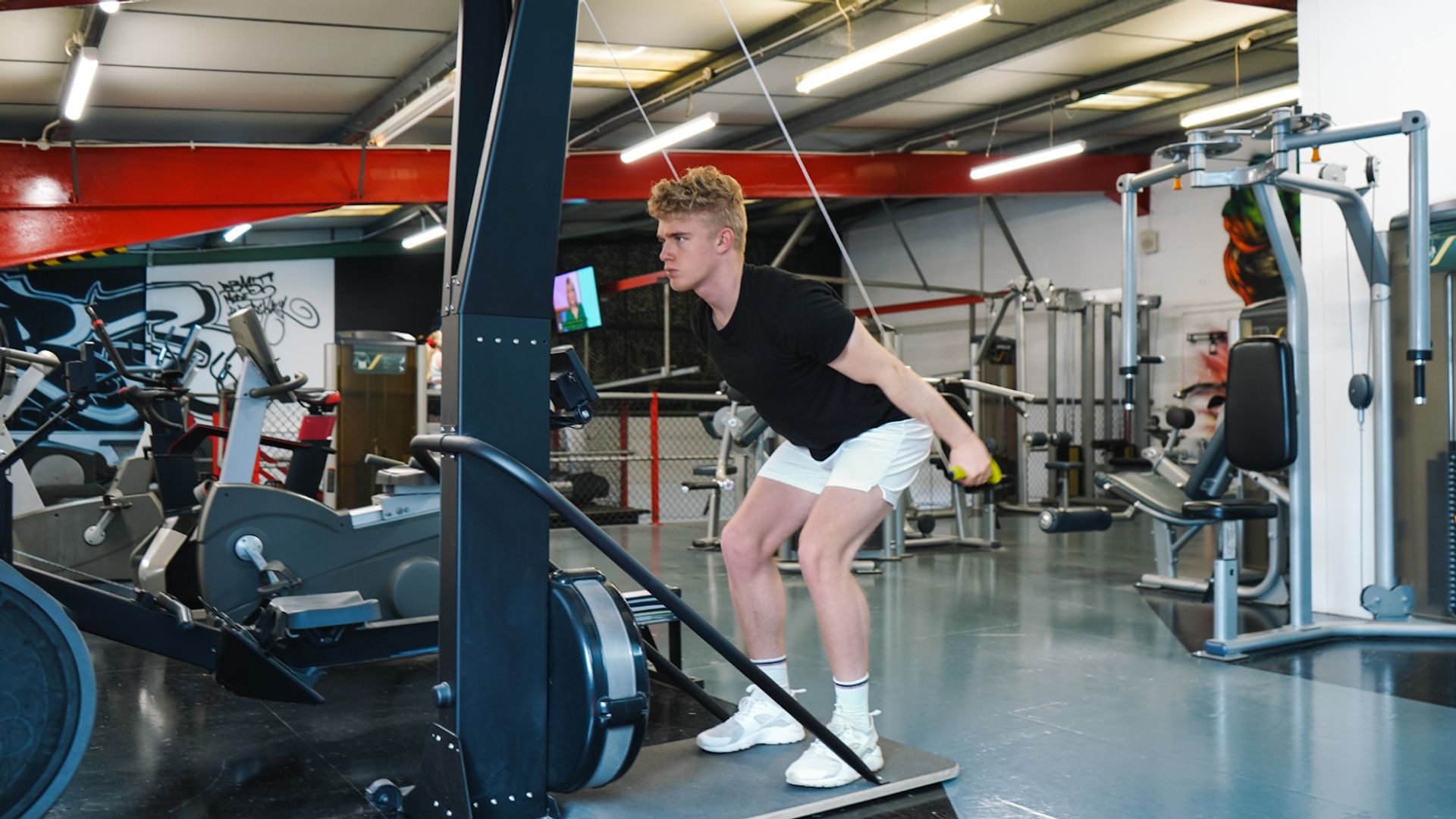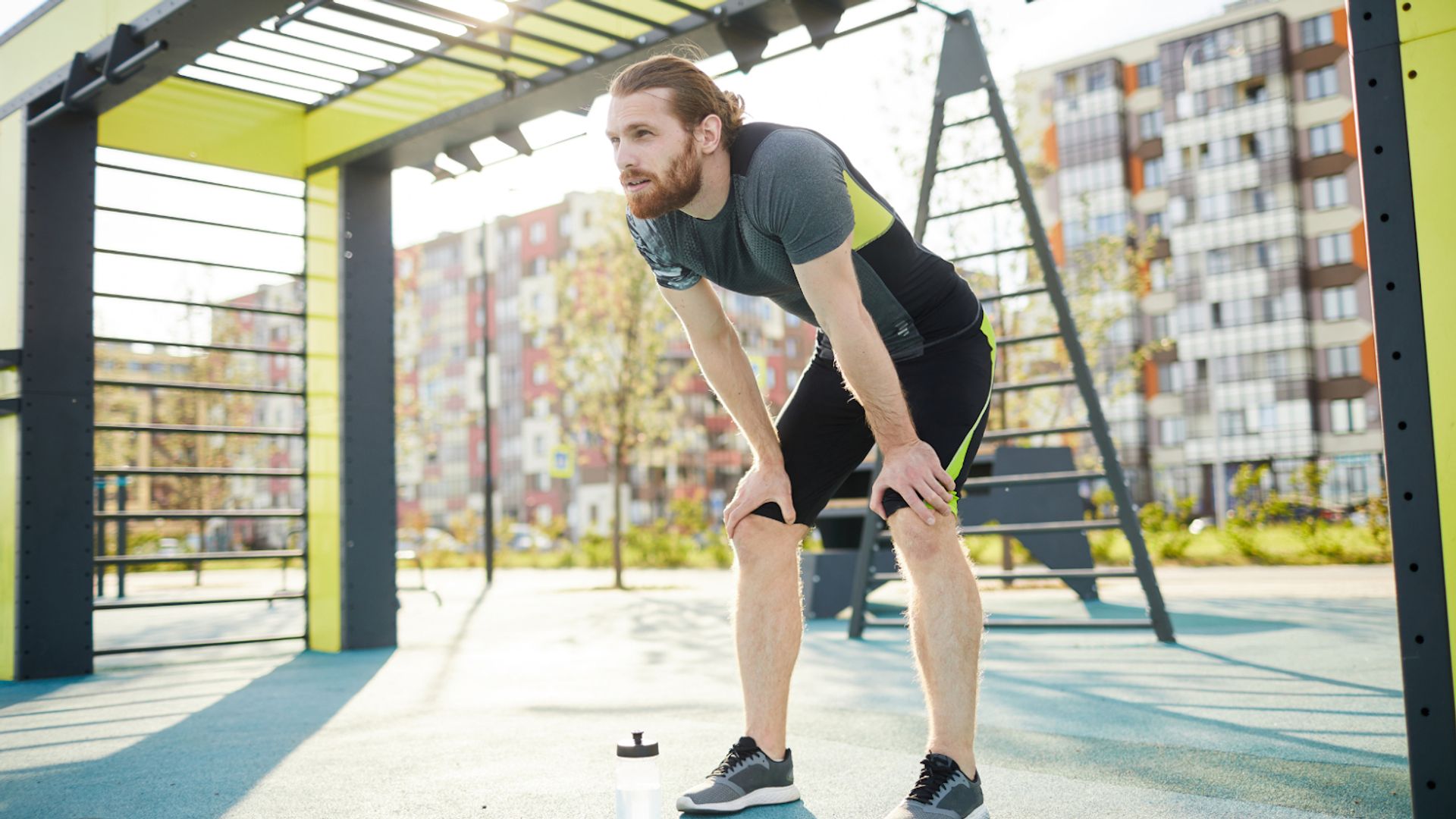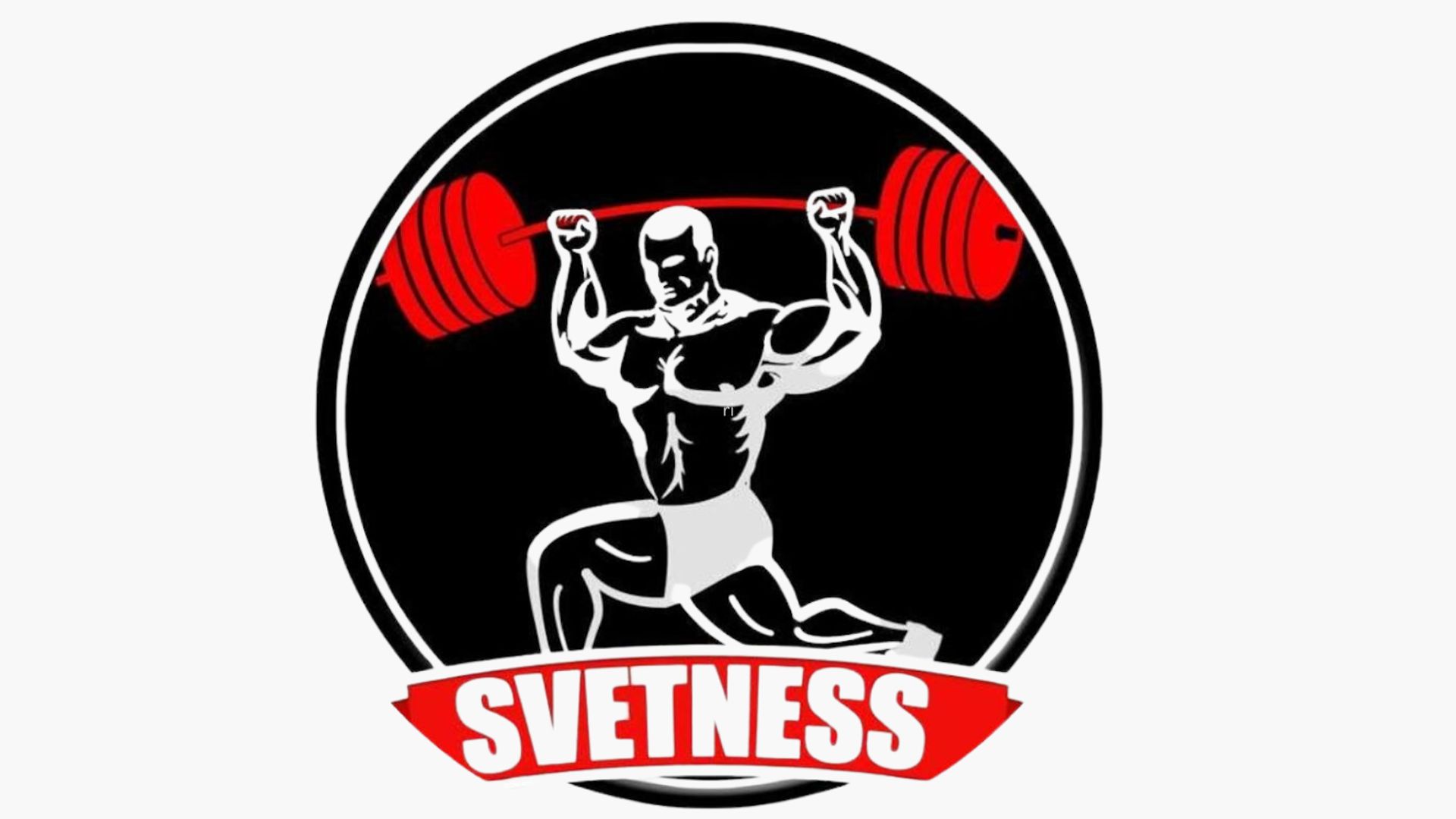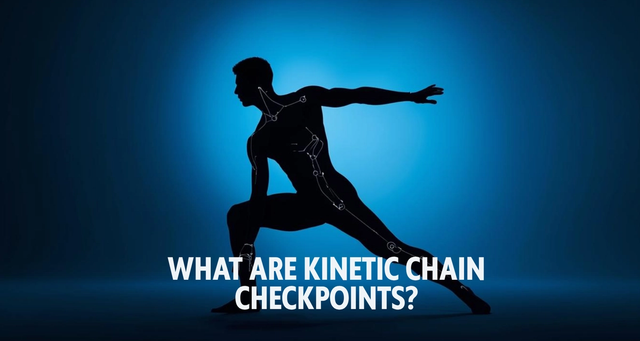
Our Trainers' Top Workouts for Cardio (Without Legs)
Whether you’re recovering from an injury or just want to give your legs a rest, cardio workouts are still entirely possible to maintain. Don’t believe us? Check out these 5 trainer-approved cardio workouts without legs.
When most people think of cardio, they picture running, cycling, or high-impact classes filled with squats, jumps, and a thorough shower at the end to wash off the sweat.
But what if your legs are not an option?
You may think that because you’re recovering from an injury or dealing with joint pain, cardio is absolutely off-limits. However, you’ll be surprised to know that’s not necessarily the case.
If you want to take the pressure off your lower body for whatever reason, you can still get a great cardiovascular workout. In fact, our Svetness personal trainers regularly build full-body routines that keep your heart rate up without relying on your legs at all.
It may sound unconventional, but cardio without legs is absolutely possible (and also surprisingly effective). With the right exercises, technique, and structure, you can build endurance, improve heart health, and even burn fat using just your upper body and core.
Still not convinced? In this blog, we are sharing our trainers’ favorite ways to help clients get their heart pumping from the waist up, no treadmill required.
Without further ado, let’s get ready for some good old-fashioned aerobic training!
Can You Really Do Cardio Without Using Your Legs?

It is a fair question, and you might be skeptical at first.
We are used to associating cardio with lower-body movement because that is how most of us are introduced to it.
But cardio is not defined by which muscles you use. On the contrary, the effectiveness of a cardio session is determined by how much your heart and lungs are working. As long as your heart rate stays elevated for a sustained period, you are getting a cardiovascular workout, at least according to science.
Moreover, Svetness trainers regularly work with clients who need to modify traditional workouts.
Some are dealing with injuries or surgeries, others have mobility restrictions, and many are simply looking for ways to train smarter and reduce strain. In every case, we use creative, trainer-approved strategies to help them stay active, strong, and healthy, without depending on leg-based movements.
What Counts as Cardiovascular Activity?
Let’s tackle this question from a scientific point of view.
In short, any activity that raises your heart rate and keeps it elevated can be considered cardio. This includes everything from swimming to dance to boxing.
The key to cardio is sustained movement and increased demand in your cardiovascular system, not necessarily the muscles you use.
In cardio without leg workouts, that effort often comes from the upper body. When you move your arms and core in a rhythmic, controlled way, especially at higher intensities, your heart responds by working harder to deliver oxygen and energy to your muscles. Over time, this type of movement builds stamina and improves your overall conditioning.
Why Upper Body Cardio Works
Your arms may not be as large or strong as your legs, but you’ll be glad to know they can still do serious work.
In fact, because your upper body muscles tire faster, they often force your heart to work even harder to keep up. When guided by a trained professional, upper-body-focused cardio can push your endurance and strengthen your lungs, all while giving your lower body a chance to rest and recover.
When You Might Need Cardio Without Legs

There are plenty of reasons someone might look for workouts that do not involve the lower body.
Our Svetness trainers work with clients in all stages of fitness, and these workouts have helped countless people maintain momentum, confidence, and results (even when leg-based training is not possible).
1. Injury, Recovery, or Limited Mobility
If you are recovering from surgery, managing chronic pain, or living with a temporary or permanent mobility issue, leg-intensive cardio may not be the best option. In these situations, customized upper-body workouts allow you to stay active while protecting your joints and supporting your recovery.
Rather than putting your routine on pause, a personal trainer can design a full program that keeps your cardiovascular health and muscular strength on track, using only what your body can handle comfortably.
2. Balancing Overtrained Legs
Even seasoned athletes sometimes need to give their legs a break.
If you are in the middle of a heavy training cycle or recovering from an intense week of running or lifting, switching to upper-body cardio is a smart way to stay active without adding more stress to already tired muscles.
Our trainers use this strategy with clients who follow high-volume programs and need effective recovery days that still challenge their cardiovascular system.
The result? Better recovery, fewer injuries, and smarter long-term progress.
5 Trainer-Approved Legless Cardio Workouts

Personal trainers, such as the ones at Svetness, are experts at building workouts around your needs.
If you are training with limitations or just looking to mix things up, these exercises are designed to challenge your heart without involving your legs. All of them can be scaled to your fitness level and customized to fit the equipment you have at home.
Without further ado, let’s get our hearts pumping!
1. Seated Boxing and Shadow Drills
One of the most popular forms of cardio without legs is seated boxing. And no, we’re not kidding.
You can sit upright in a chair or on a bench, keep your feet grounded, and use your upper body to perform jabs, crosses, hooks, and uppercuts in rhythmic sequences. By moving with intention and maintaining good posture, you will engage your core while elevating your heart rate.
Svetness trainers often coach clients through rounds of boxing-style drills that mimic the intensity of a cycling or HIIT class, all while staying seated. Adding light hand weights or resistance bands can increase the intensity even more.
2. Battle Rope Upper Body Intervals
If you have access to battle ropes, they are one of the most effective tools for cardio without legs. The constant motion required to keep the ropes moving forces your arms, shoulders, and core to stay active, while your heart works to keep up.
Svetness clients often work through short intervals using different patterns, such as waves, slams, or circles, designed to target different muscle groups.
The goal is not just to move the ropes, but to do so with control, breathing, and rhythm that sustain heart rate and build endurance.
3. Arm Ergometer Workouts
The arm ergometer, sometimes called an upper body cycle or UBE, is a go-to tool for anyone seeking non-weight-bearing cardio. It is especially common in rehab settings, but it also works well for general conditioning.
Our trainers incorporate arm ergometer intervals into client routines to help build aerobic capacity, especially for those who are recovering from leg injuries or surgeries. These exercises offer the same structure as cycling or rowing but focus entirely on upper-body rotation and endurance.
Seated Resistance Band Punches
Resistance bands are a simple but powerful tool for building both strength and cardiovascular endurance.
By anchoring the bands and performing fast, repetitive punches or pull-aparts, clients can create a cardio challenge that activates the arms, shoulders, and core.
Svetness trainers coach proper form and pacing to ensure clients move with control and avoid strain. These workouts are especially helpful for people training at home with limited equipment and space.
5. Core-Focused Cardio Circuits
Last but not least, we have core-focused cardio circuits.
It’s important to remember that your core can also be a driver for cardio. When designed carefully, seated or reclined core movements, like Russian twists, seated reach-and-pulls, or modified mountain climbers, can elevate the heart rate while strengthening key stabilizer muscles.
Our trainers combine these movements into structured circuits that blend muscular endurance and cardiovascular conditioning. The result is a session that feels challenging, engaging, and effective, all without putting pressure on your legs.
Breathing, Pacing, and Intensity Tips

When your lower body is not part of the equation, understanding how to manage intensity becomes even more crucial. Svetness trainers teach clients how to use pacing, breathing, and mindful movement to get the best results while giving their legs a much-needed rest.
Your arms and upper body may tire faster than your legs, so it is important to monitor your effort and focus on form rather than speed. Controlled movement creates more muscular engagement and keeps your heart rate in the right range for effective cardio.
Let’s take a look at some of the best practices when it comes to cardio, sans legs.
How to Track Progress
Without a treadmill or obvious pace, it can be tricky to know how hard you are working.
That is why many of our trainers teach clients to use the talk test: If you can speak in short
sentences but not hold a full conversation, you are likely working in the right zone.
Perceived exertion is another helpful tool. On a scale of one to ten, your effort during cardio without legs should fall somewhere between a six and eight, depending on the session’s goal. You want to feel challenged but still in control.
How to Avoid Upper Body Overuse
Because these workouts focus on the upper body, it is vital to balance intensity with rest.
Shoulders, wrists, and elbows are more prone to fatigue and strain if not given enough recovery time. Svetness trainers carefully design each program with rest intervals, mobility drills, and variety to prevent overuse and support long-term success.
Proper warm-ups and cooldowns are also essential. Before diving into a workout, trainers lead clients through joint prep and activation drills to make sure muscles are ready to work and that they recover well when the session is over.
How Trainers Customize Cardio for Every Body

One of the biggest benefits of working with a personal trainer is the ability to adapt.
We all know that life does not always go as planned. Injuries happen, limitations pop up, and routines shift. Svetness trainers specialize in building workouts that fit your body, your environment, and your goals, no matter your starting point.
When it comes to cardio without legs, that flexibility becomes even more valuable. Our trainers do not rely on one-size-fits-all solutions. Instead, they assess your current fitness level, understand your mobility needs, and build custom programs that challenge your heart, strengthen your body, and respect your limits.
Final Thoughts
Just because your legs are out of the picture does not mean your cardio has to be.
With the right structure and guidance, you can get an effective, sweat-worthy workout that improves heart health, builds endurance, and strengthens your upper body, all while keeping your legs safely at rest.
Cardio without legs is not just a backup plan. It is a smart, strategic option that works for all types of people at all stages of fitness. And with help from a personal trainer, you can do it safely, effectively, and consistently.
At Svetness, our trainers know how to get results, even when your options feel limited. They will meet you where you are, design workouts that challenge and inspire you, and help you stay active and strong, no matter what is holding you back.
If you are ready to explore a new way to train, our team is here to help you learn a few new tricks.
Frequently Asked Questions
Is cardio without legs effective for weight loss?
Yes, it can be. Any exercise that raises your heart rate and is done consistently can contribute to weight loss. When combined with healthy eating and strength training, cardio without legs can support fat loss and improved body composition.
Can I do cardio while seated and still get results?
Absolutely. Seated cardio, when done at the right intensity, still challenges your heart, lungs, and muscles. Many clients experience better stamina and even strength improvements through consistent seated workouts guided by a trainer.
How often should I do upper-body-focused cardio?
Most people can perform upper-body cardio two to four times per week, depending on intensity and recovery. A trainer can help you build the right schedule to balance strength, conditioning, and rest.
What if I feel shoulder or wrist fatigue during workouts?
It is important to listen to your body and adjust intensity or volume as needed. Svetness trainers include mobility work and exercise variety to prevent overuse, and they can modify movements to reduce strain on sensitive joints.
Start your Svetness journey today
Get a free consultation and see how our trainers can transform your wellness journey.





